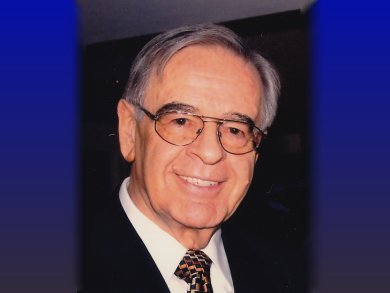Professor Christian Reichardt, former professor of organic chemistry, Philipps-University Marburg, Germany, is the author of the successful book Solvents and Solvent Effects in Organic Chemistry. The book is now in its fourth edition and, for the first time, has been co-authored with Thomas Welton.
Professor Reichardt talks to ChemViews about his life, what made his book so popular, and how he became known as “Solvent-Reichardt”.
Could you please introduce yourself and give us a brief overview about your academic career?
I was born 1934 in Ebersbach, East Saxony, in what was then the German Democratic Republic (GDR). After my final school examination, I worked as teaching assistant at the Fachschule für Energie in Zittau, Saxony, from 1953–1954, before I was allowed to study chemistry at the Technische Hochschule für Chemie in Leuna-Merseburg, GDR. After illegally moving to West Germany (FRG) in 1955, I continued to study chemistry at the Philipps-Universität Marburg, where I obtained my Ph.D. in 1962 under the tutelage of Professor Karl Dimroth and completed my Habilitation in 1967. From 1971–1999, I was Professor (C3) of Organic Chemistry at the Philipps-Universität Marburg, and Visiting Professor at the Universities of Barcelona, Spain (1988), Bratislava, Slovak Republic (1998), and Oita, Japan (2000).
For the book on “Solvents and Solvent Effects in Organic Chemistry” I received the literary prize of the Fonds der Chemischen Industrie, Frankfurt, Germany, in 1989. And for my work in Physical Organic Chemistry in 2000 the Marie-Skłodowska-Curie-Medal of the Polish Chemical Society, Warsaw, as well as in 2007, the title Dr. honoris causa of the Karazin National University in Kharkiv, Ukraine.
What has been the focus of your research?
There were two focuses of my research interests: (1) Synthetic organic chemistry, i.e., syntheses of and with substituted malonaldehydes (e.g., alkyl-, cycloalkyl-, halo-, arylazo- and formylmalonaldehydes); syntheses and UV/Vis spectroscopic studies of achiral and chiral polymethine cyanine dyes, as well as solvatochromic pyridinium-N-phenolate betaine dyes.
And (2) Physical organic chemistry, i.e., solvent effects in organic chemistry; solvatochromism, thermochromism, halochromism, and chiro-solvatochromism of achiral and chiral pyridinium-N-phenolate betaine dyes; empirical parameters of solvent polarity; e.g., further development of the ET(30) resp. ETN solvent polarity scale. — More than 50 % of my papers deal with synthetic organic chemistry.
Which topics have been the most exciting?
The most exciting topics were the synthesis of new fluoro-substituted compounds by means of fluoromalonaldehyde, of new ß-phospha- and ß-arsa-trimethine cyanine dyes, of new trinuclear and chiral polymethine cyanine dyes with particular chiroptical properties.
And possibly the most exciting was the development of the up to now largest empirical scale of solvent polarity, called ET(30) or ETN scale, by means of solvatochromic betaine dyes. It covers more than 400 solvents and many solvent mixtures.
Can you explain this a bit please?
These are pyridinium-N-phenolate betaine dyes. Their long-wavelength intramolecular charge-transfer absorption in the visible region is strongly solvent-dependent. This leads to hypsochromic band shifts with increasing solvent polarity (negative solvatochromism). These particular Vis spectroscopic properties make them ideal color indicators for the empirical determination of the polarity of solvents commonly used as reaction media. For example, the solution color of the standard betaine dye – now commercially available as “Reichardt’s Dye” – is red in methanol, violet in ethanol, blue in isopropanol, and green in acetone. You can see this on the cover page of my book.
How and when did the book project start?
When, in 1966, I got an invitation from Dr. Foerst and Dr. Grünewald from the famous Verlag Chemie in Weinheim, Germany, to write a book on solvent effects, I felt very much honored because at that time I was only an unknown assistant working on his Habilitation in Marburg. When I proudly showed this invitation letter to Professor Dimroth (my former “Doktorvater” and director of the Chemical Institute I was working in), he was not amused because he thought that he should have got this invitation first. In the end, he let me have my way and I have mentioned his generous support in writing the book in the preface.
By the way, the reason for inviting me to write this book was not only my lecture on this topic, but also a review published in Angewandte Chemie on Empirical Parameters of Solvent Polarity [1]. This article is one of my most successful publications and belongs to the 25 most-cited papers published in this journal in 1962–1984 [2].
What is the formula of success for your book?
There was no preexisting recipe for success for my book, but it was probably successful for three reasons:
(a) When my first book was published in 1969, there was no other comprehensive overview on solvent effects in organic chemistry — and this is to some extent true even now. For comprehensive information on this topic, this book is still a reliable source of information.
(b) That first edition was only a small German paperback published by Verlag Chemie in the series “Chemische Taschenbücher”. It was based on one of my lectures held in Marburg as a young docent. When Dr. Ebel from Verlag Chemie asked me later on to write a full monograph on solvent effects in English, the original conception was maintained and, therefore, the book is now a mixture of textbook and monograph.
(c) The work on solvent effects in organic chemistry is scattered over a large variety of different journals and books, and it was rather laborious to collect and read all these papers. Therefore, the literature list of the book is more spacious as usual, and the book is to some extent also a reference book, which was obviously appreciated by the readers.
What is it like to be the author of such a well known and successful book?
I have viewed the success of this book with mixed feelings because I considered myself primarily as a synthetic organic chemist, but now I was labeled as “Solvent-Reichardt”, and at meetings, lectures dealing with this work were indemand rather than those focusing on my other synthetic work.
The new edition is, for the first time, written with a co-author. How was your experience of working with Thomas Welton as a co-author?
The collaboration with a co-author was new for me. However, as there was a clear definition of what both authors should do (Tom would write a new chapter on Solvents and Green Chemistry), the potential for conflict was small. As we have known each other for a long time, the cooperation was good.
Do you think there will be an additional edition in the future?
I don’t plan a 5th edition.
There was an interval of about seven years between the 3rd and 4th editions. Therefore, the next edition should be possibly published around 2017. As the averaged life expectancy for men is ca. 80 years at present and I am now nearly 77 years old, such a plan would be somewhat daring. Also, while my wife took an active interest in the production of the various editions, now she is glad that the 4th edition is ready and I can spend more time with her and the family.
Have you received feedback or some critical comments?
The response of the scientific community to this book was astonishingly friendly. I have got many letters with proposals for improvements. However, one of the first letters I got from two French colleagues after the publication of the German paperback made a complaint about the list of references, where I had mentioned only the review of their mentor but not their own original papers. I wrote an excuse and corrected this in the next edition. But this was practically the only negative reaction.
Is there perhaps a nice little anecdote you can tell?
From the first German paperback a pirate edition was published in Russian in 1973, available only within the Soviet Union. This came to my knowledge only accidentally as a colleague from Moscow visited Marburg in 1974. I gave him a copy of my book as a present and he said that he was a member of the board which decides which foreign books are to be translated into Russian. After a few weeks I got a letter from him saying that a translation was not possible because this book had already been published in Russian in Leningrad. It was extremely difficult to get a copy of this Russian edition, but with the help of some friends and the diplomatic courier post between Moscow and East Berlin, I finally got three copies.
By the way, in 1987 a Chinese pirate edition of the first English monograph was published in Beijing, China, and I got a private copy (printed on rice paper) from one of the translators, who visited me in Marburg later on.
Thank you for this interview!
 Solvents and Solvent Effects in Organic Chemistry, 4th Edition
Solvents and Solvent Effects in Organic Chemistry, 4th Edition
C. Reichardt, T. Welton,
Wiley-VCH Verlag GmbH & Co, KGaA, Weinheim, 2010.
ISBN: 978-3-527-32473-6
References
[1] C. Reichardt, Empirical Parameters of the Polarity of Solvents, Angew. Chem. Int. Ed. Eng. 1965, 4(1), 29–40. DOI: 10.1002/anie.196500291. Angew. Chem. 1965, 77(1), 30–40. DOI: 10.1002/ange.196500291
[2] Angew. Chem. 1986, 98(1), A-5, print issue only.




